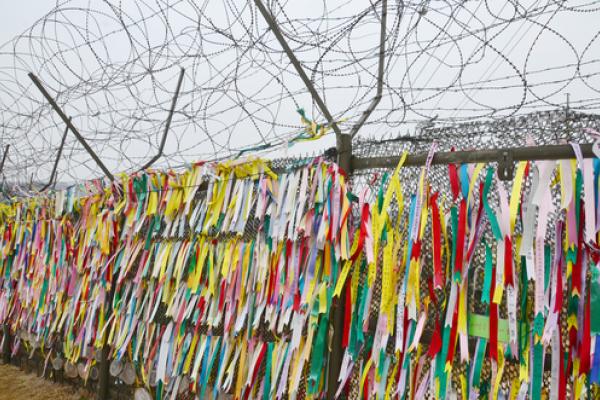Walls exist between U.S. and Mexico. A few years ago, I took a class to the Mexico-U.S. border through BorderLinks, an organization that provides educational experiences to connect divided communities, raise awareness about border and immigration policies and their impact, and inspires people to act for social transformation. We visited the metal wall that separates the United States from Mexico at Nogales, Mexico.
The walls went up in 1994.
The North American Free Trade Agreement (NAFTA), established in 1994, was supposed to help with trade and the economic status of Mexico. However, it failed to do this. It backfired and made the economic situation worse for the people of Mexico. Rich corporations and companies that benefited from the Free Trade Agreement as they were able to move their factories down to Mexico where the labor was cheap and profits higher. As the economy of Mexico suffered, more people made their way, without documents, to the United States to seek work so they could support their families.
In 2006, the United States responded with the Secure Fence Act. As President George W. Bush signed the bill, he stated, “This bill will help protect the American people. This bill will make our borders more secure. It is an important step toward immigration reform.” The act included provisions for the construction of physical barriers — walls — and the use of technology to these ends.
This wall is under constant surveillance to prevent people from entering into the U.S. illegally. Ironically, it is a wall built from the remaining metal landing scraps of the Gulf War. The border is highly militarized with patrols who treat migrants as “prisoners of war.” It symbolizes militarization, greed, xenophobia, hatred, pride, nonsense, and fear of the other, a reminder of wanting to protect what is yours and not sharing what God has given you. Walls continue to go up along the border as the people of the United States continue to fear that undocumented people will take away jobs. These fears may devastate the lives of the poor in both countries.
As we ponder walls and the devastation caused by building them, many people in the United States have begun to recognize that we cannot continue building walls to separate us from others. We need to break them down.
The Korean peninsula is another example of a place that is divided by a great wall/barrier. The divided border is called the DMZ: a “demilitarized zone,” created in 1953, years after Korea was separated into two countries by the United States and the Soviet Union at the end of World War II. This division continues to generate more fear and hostility.
I have visited the DMZ several times; the last time I took two of my three children to see it. They are too young to remember the visit, but every time I visit the DMZ, I am overcome with emotion. The devastation of families separated, lives lost, friendship broken, and a country torn apart. It is a sign of despair, hatred, sadness, anger, division, and hopelessness.
At the border, there is a metal fence that divides the road traveling into the DMZ. Hundreds of letters, notes, flowers, and trinkets are woven into the fence, left by families and strangers to express the pain and longing that each person feels. Koreans want the two Koreas to unite so that the wall can be dismantled and families reunited. Brokenness needs to be healed.
As we think about walls of division, we recognize that for such walls to come down, we need to repair the damaged and broken relationships that built them in the first place. As responsible people, we need to examine and reexamine where relationships have crumbled and how we may delicately repair and restore them. The hostility between the two Koreas needs to end as we work toward unity and freeing Kenneth Bae. Peace needs to be restored on this tiny peninsula, my homeland
Walls can be torn down — walls that separate us from each other and rip families apart. As we endeavor in this work, our fears and hatred of the other need to be abolished. Communication, dialogue, trust, and mutuality need to be restored.
Grace Ji-Sun Kim received her M.Div. from Knox College (University of Toronto) and her Ph.D. from the University of Toronto. She is a Visiting Researcher at Georgetown University.
Image: Prayer ribbons hung on the wall in South Korea, meunierd / Shutterstock.com
Got something to say about what you're reading? We value your feedback!
